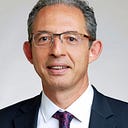Stranger in a strange land: my experience as an immigrant researcher
Adapted from Genome Biology 18, Article number: 232 (2017). https://doi.org/10.1186/s13059-017-1370-4
What influenced your choice to move to your current country?
Sophien Kamoun (SK): There is this old German expression “wo die Musik spielt” — you go where it’s happening, where the “music is played”. I think that sums it up. When I was a student in the 1980s, almost everyone wanted to do a Ph.D. in the USA. I felt that to have the best training and to be among the best, I had no choice but to study in the USA. I think that was a pretty correct assessment of the state of affairs in the 1980s. Indeed, I had a fantastic experience at the University of California, Davis. Also, at that time, Europe wasn’t really open to non-Western scientists, and international mobility wasn’t recognized like it is today [1]. Later, I moved to the Netherlands and then back to the USA before landing in my current position at The Sainsbury Laboratory (TSL) in Norwich, UK. I moved to Norwich exactly 10 years ago, primarily because of the reputation of the laboratory as a center of excellence for plant pathology research and the generous support provided by David Sainsbury through the Gatsby Foundation. I have had a phenomenal time at TSL these past 10 years, where I have had the opportunity to work with outstanding scientists from perhaps about 30–40 countries. An interesting point is that when TSL was founded in 1988, all the group leaders were British [2], but currently our principal investigators are from all over the world [3]. I think TSL truly reflects the emergence of the #ScienceisGlobal movement on social media [4], which is so evident in the UK and other corners of Europe.
Can you comment on any barriers or unconscious biases you have experienced as an immigrant scientist that perhaps your colleagues have not experienced?
SK: It is difficult to make such claims with confidence and without sounding like a complainer or a grouch. There is a fine line between paranoia and perception. Perhaps this question is best asked to our native colleagues and whether they feel they are biased. This said, we all have cognitive biases, particularly feelings outside of conscious awareness [5]. Professor Uta Frith has developed an outstanding animation and briefing on unconscious bias that I urge everyone to consult [6]. The best we can do is to educate and create processes to remind colleagues, committees, funders, etc. that we shouldn’t judge people on the basis of ethnicity, gender, physical appearance, disability, or other things people have no control over. What I find most useful is to raise awareness about valuing diversity in all its forms and to think of actions and incentives for improving behavior.
What have been your biggest challenges and greatest opportunities in your career?
SK: In most countries, the bar tends to be higher if you are an immigrant. You can’t be just as good as the next candidate to get the job or the promotion. However, this can also be a great motivator to be better and excel. You just have to believe that you live in a meritocracy and that the better candidate will be recognized. Personally, I generally felt that being an immigrant has enabled me to forge my own style and personality without worrying too much about other people’s expectations. Being an immigrant actually comes with some degree of freedom. Given that people expect you to be different, you may as well be yourself.
What more can be done to encourage and support researchers living overseas?
SK: There is much effort to raise awareness about gender balance and related issues in science. This is of course highly commendable, and it is hopefully resulting in concrete outcomes to improve the roles that women play in science and academia. I wish to see a similar movement towards appreciating the impact of foreign-born scientists. We need to better recognize that ethnic and cultural diversity brings a lot of positives to the scientific enterprise. For one thing, it is well established that multicultural experiences tend to increase creativity and are more likely to generate that “aha” moment [7]. It also helps to counteract the infamous old-boy network that has plagued science and academia for ages [8].
I propose that the percentage of foreign-born scientists should be considered as a measure of diversity that is applied to committees and other decision bodies. There is a lot of trumpeting of #ScienceisGlobal by funding agencies and learned societies, but I’m not so sure that their diversity record in terms of foreign-born scientists is that great. An example would be the 2014/2015 rounds of the Biotechnology and Biological Sciences Research Council (BBSRC) Future Leader Fellowships, which has a great record for gender balance but the diversity of the selected candidates doesn’t seem to match the diversity of students and postdocs that I see around me [9]. I’m glad that the 2016 cohort seems to be more diverse. One step forward is to pay close attention to the composition of the selection committees. Does the committee diversity in terms of foreign-born members reflect the diversity of the institution? Another action is to educate committees about unconscious bias and how this may affect their decision making [6].
